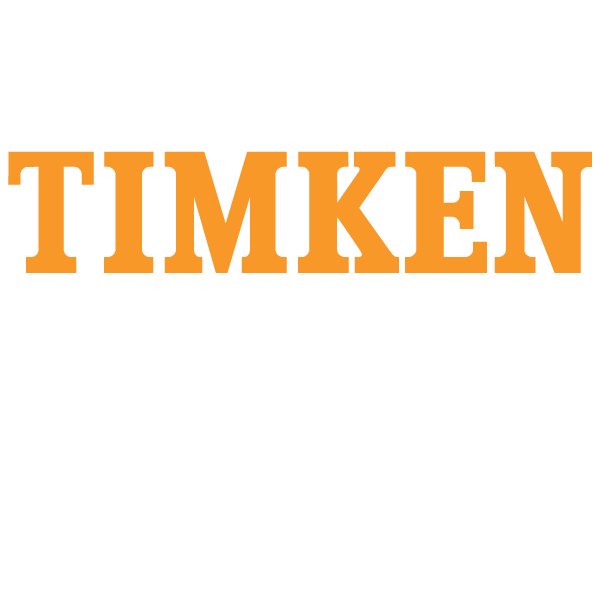

MOUNTING DESIGN, FITTING PRACTICE AND SETTING
ENGINEERING 38 TIMKEN
THRUST BEARING CATALOG
THRUST CYLINDRICAL ROLLER BEARINGS - TYPES TP AND TPS
Thrust cylindrical roller bearings are generally used in applications where high axial loads are present. Timken TP and TPS thrust cylindrical roller bearings are used in a variety of heavy industrial equipment and challenging thrust applications. Mineral and aggregate crushers and pulverizers are typical examples where thrust cylindrical roller bearings are used in primary thrust support positions to handle the loads applied during the compressive breakdown of aggregate (see fig. 34). Dependent on mounting and axial force applications, these bearings can accommodate moderate overturning moments.
Fig. 34. Typical mounting arrangement of thrust cylindrical roller bearing in crusher application.
Mounting is typically handled by hoisting mechanisms in a shop environment, but may be assembled manually in the field during replacement situations. Mounting of TP and TPS bearings with loose fitting practice on both the shaft and housing is common to allow ease of installation. However, depending on bearing reaction torque, anti-rotation features may be required.
THRUST SPHERICAL ROLLER BEARINGS - TYPE TSR
Thrust spherical roller bearings are used to support axial force in a wide variety of industrial machinery. They can be mounted at axial positions on vertical shafts (e.g. crushers), or mounted horizontally as in long product mill, flat product mill, and cold mill works or intermediate rolls with axial shifting. These assemblies are best suited for applications where accommodation of heavy roll bending and high misalignment is required. Timken thrust spherical roller bearings are capable of handling misalign- ment between the inner and outer ring of up to 2.5 degrees in either direction. Bearing outer rings must be mounted with a loose fit to isolate radial loads when used as pure thrust bearings. When used in a shaft position and reacting to radial and axial forces, special housing fitting practice is required. To support axial loads in both directions, thrust spherical roller bearings are often mounted in pairs. In such situations, a spring system maintains the outer races in contact with the rollers on the unloaded row. An axial clearance must be established during mounting using a shim pack between the chock and the cover. Housing components must be designed to accommodate preload springs or precision axial clearance setting. A cartridge or adapter ring is sometimes used with the inner rings tight fitted on a sleeve and the sleeve loose fitted and keyed on the shaft (see figs. 35 and 36 for typical mountings of EJ and EM styles respectively).
Fig. 35. Back-to-back mounting arrangement of a TSR-EJ bearing set.
Previous Page
